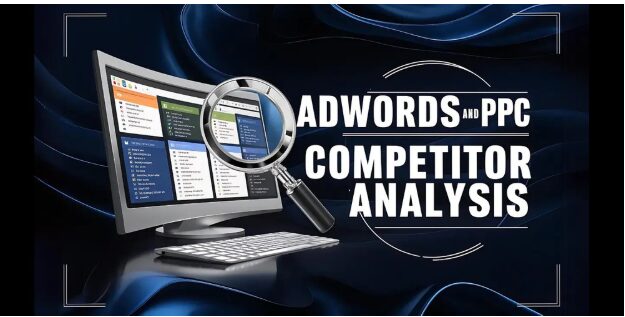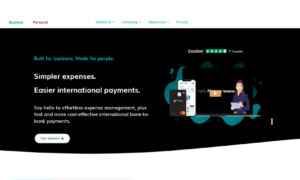You need to be aware of what your rivals are doing if you want to advance your advertising strategies. Reviewing competitors’ AdWords and PPC strategies is essential as new businesses grow and draw clients looking for the same goods or services. By using efficient AdWords and PPC competitor analysis strategies in your campaigns, you may maintain your market leadership. You will learn about the best strategies that will help you outperform your rivals in this article.
What is the Difference Between AdWords and PPC?
Businesses use the specialist platform AdWords, now known as Google advertising, to bid on keywords to have their advertising appear on Google search and other Google network websites. Conversely, pay-per-click, or PPC, refers to any online advertising approach in which marketers are charged a fee each time one of their ads is clicked. Be aware that PPC advertising includes AdWords, but it also includes Bing Ads, Facebook Ads, and other platforms.
Top 5 AdWords Competitor Analysis Techniques
1. Keyword Gap Analysis
When it comes to uncovering the tactics of your rivals, nothing is more effective than a keyword gap study. This relates to using the resources at your disposal to identify the keywords that your rivals are pursuing but you are not. To help recover the lost visitors, content and advertising initiatives can be developed using the focus keywords. Additionally, keyword gap analysis aids in identifying the keywords you overlooked and omitted from your text.
2. Analyze Ad Copy
It can be useful to look into what your rivals have included in their ads. Check out their use of attention-grabbing titles, keywords, and calls to action in their advertisements. Learn what makes their ad copy so effective, then consider how you may apply some of their strategies to your own brand. Take note of what affects their audience’s feelings and how they connect to their issues or requirements. A stronger ad text that appeals to your specialised market and generates high activity rates may be created by having an understanding of these factors.
3. Monitor Ad Placements
You can learn about competitors’ targeting and preferred ad formats by analysing ad placement. For example, are they investing more in search, display, or video ads? This information gives you the ability to change your tactics and choose those that will work better for your intended audience. Effective ad placement monitoring also aids in spotting potential future engagement possibilities for your audience, which increases exposure and strengthens the visibility of your business.
4. Study Landing Pages
Among other places, your competitors’ landing pages may be helpful. You can choose which elements to use into your landing pages by examining the page layouts of rivals’ landing sites and challenging their calls to action and content. In particular, consider the elements of their website that are focused on conversion objectives and interesting to the intended audience. Additionally, take into account factors like loading speeds, overall user experience, and mobile device responsiveness.
5. Utilize Auction Insights
Google advertising features like Auction Insights provide statistical information that illustrates how your advertising compare to others. You can use this tool to determine who your competitors are in terms of ad space, and then you can adjust your actions to match theirs. Regularly reviewing auction analysis enables you to monitor and adjust to shifts in the competitive landscape. Utilise this information to modify your bids, targeting, and ad placements as necessary to maximise the effectiveness of your advertising campaigns.
Top 5 PPC Competitor Analysis Techniques
1. Use PPC Intelligence Tools
By keeping an eye on your competitors’ actions, you can use specific PPC intelligence strategies and tools to help you expand your company. These tools collect data on advertising competitors’ spending plans, keywords, and overall campaign performance. Finding ways to improve your advertising campaigns is made easier with the help of this information.
2. Review Competitor Ads Across Multiple Platforms
PPC is not limited to Google; it can also be used on other platforms. Examine ads on a variety of websites, including Bing, Instagram, and Facebook. Making this choice can broaden your understanding of how your rivals are moving and may reveal untapped opportunities. For instance, you may discover that the competition targets a certain niche that you were previously unaware of or uses an ad type that is quite effective in your sector. In this manner, it’s feasible to discover fresh opportunities for development and gain a more comprehensive viewpoint.
3. Track Ad Frequency and Timing
Knowing the frequency and timing of your competitors’ advertisements might provide important hints about their spending and targeting tactics. To keep an eye on ad timing and frequency, use technologies like ad spy software or manual audits. By using this information, you may improve the reach and engagement of your ad programs. To reach the same population, you might wish to plan your ads similarly if you observe that a competitor runs ads often on particular days or hours.
4. Analyze Audience Targeting
Analyzing competitors’ audiences allows you to reveal segments and demographics that you might not have considered. One can utilise technologies like social media analytics and audience insights to gather information about their followers. This could make it easier for you to more effectively target those potential customers with your advertising initiatives. For instance, you might alter your ad images and slogans to better suit the needs of your target audience if you discover that your competitor is primarily targeting Instagram users between the ages of 20 and 30.
5. Assess Bidding Strategies
Your plans and strategies are impacted by the auction tactics used by your rivals in the industry. Take note of the cost-per-click (CPC), cost-per-thousand-impressions (CPM), or other comparable models that they employ. Examine the positioning of the advertisements as well as the competition for specific keywords and target audiences. To get the most for your money, it can assist you in choosing the most effective bidding strategy for your campaigns. For example, you may choose to focus on variant keywords that get the same amount of traffic at a lower cost if you observe that the rival consistently bids a high price for a particular keyword.
Conclusion
Using PPC and AdWords to analyse your competition is a continuous process that can significantly enhance your marketing strategies. To achieve the best outcomes, you can keep an eye on the strategies used by your rivals and adjust your strategy accordingly. Please keep in mind that in order to offer your company the competitive advantage it deserves, you must occasionally carry out these tasks.

































